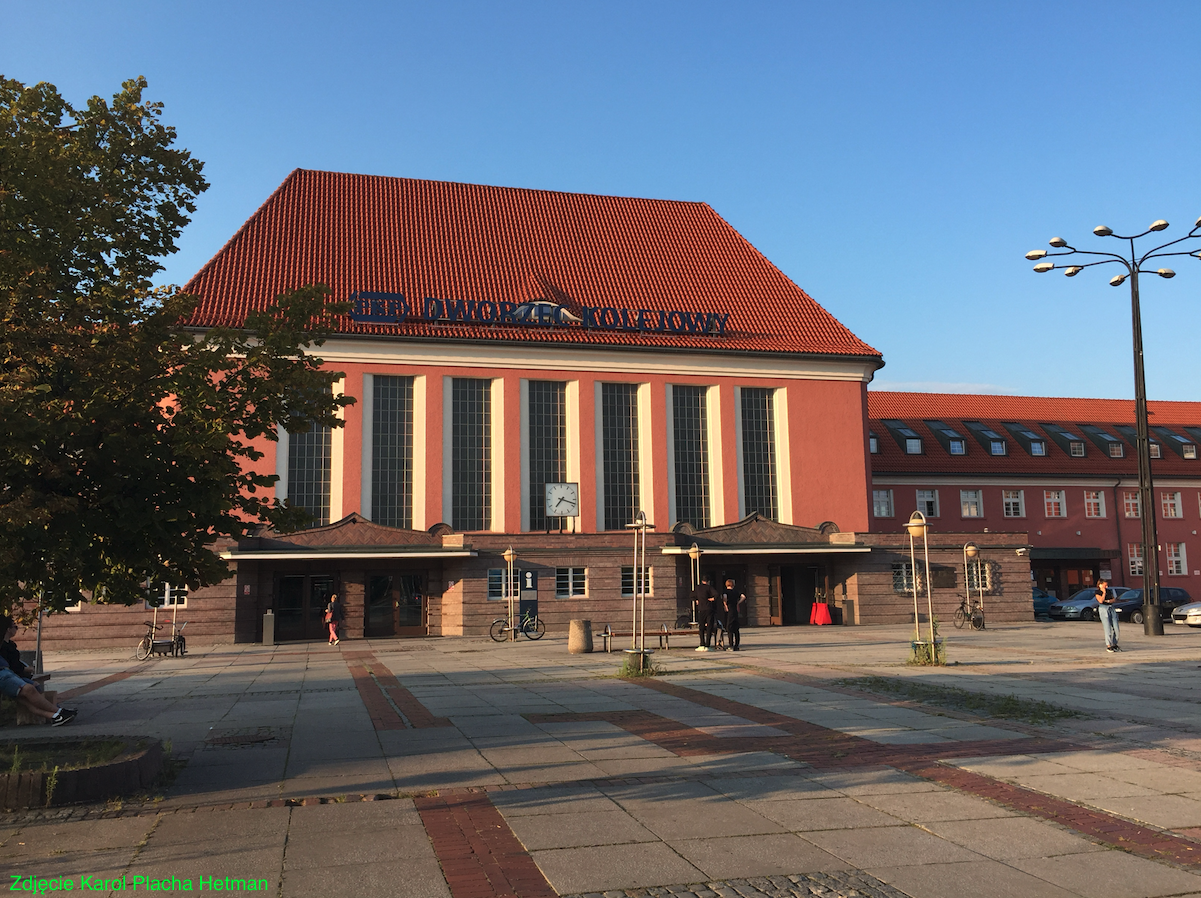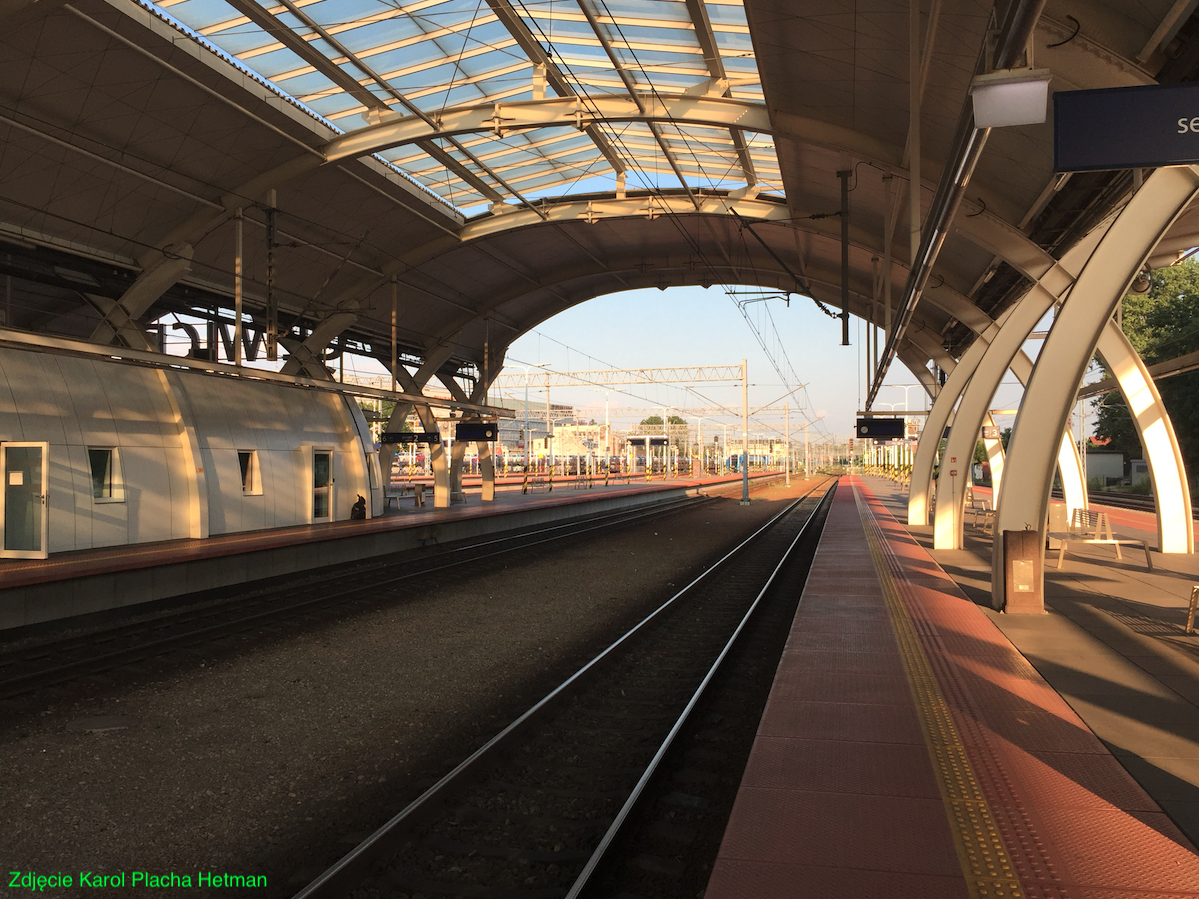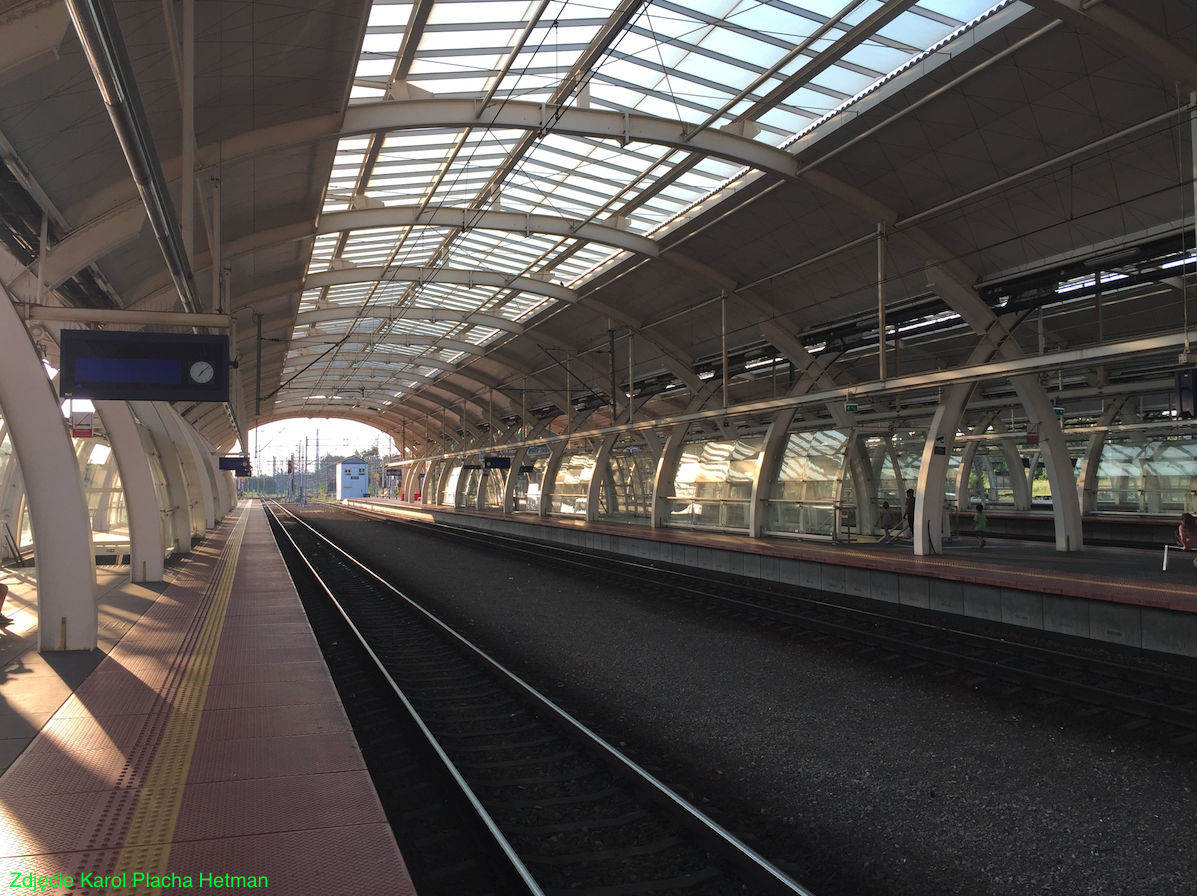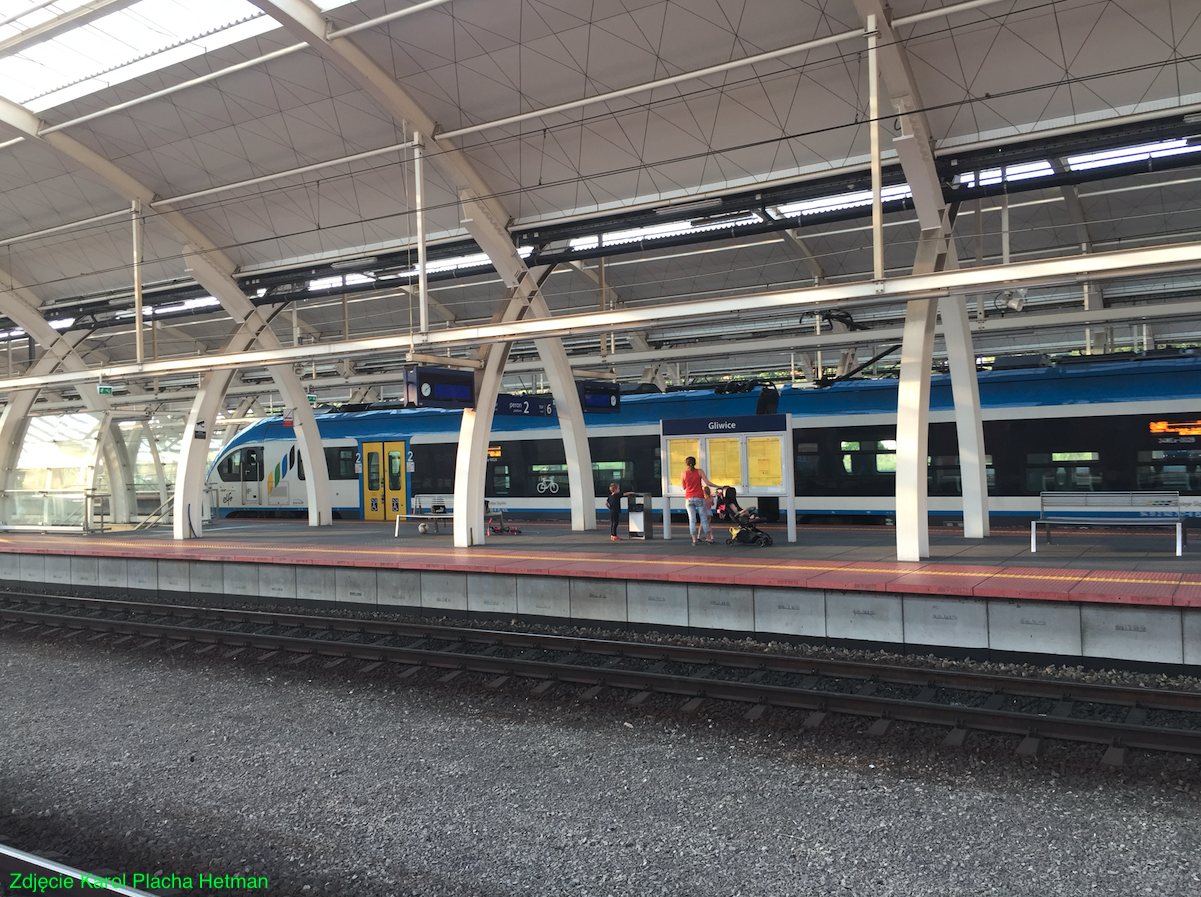Gliwice 2024-01-25
Gliwice railway station.
Geographic coordinates: 50.301N 18.677E. Elevation 221 m.




City of Gliwice.
The city of Gliwice is located in the western part of the Silesian Voivodeship and in the so-called Upper Silesia, in its western part. Geographically, it is located on the Katowice Upland, on the Kłodnica River. The city of Gliwice received city rights in 1276 from Prince Władysław of Opole. In history, the city was ruled by Polish, Czech and Prussian princes. In 1945, Gliwice was incorporated into Poland.
History of the railway in Gliwice. Prussian period.
Historically, Gliwice was one of the first cities in today's Poland to have a railway. On June 3, 1836, Prussian manufacturers founded the Founding Committee of the Upper Silesian Railway. The goal was to transport coal and steel from Upper Silesia deep into the German Empire. The advocate of railway construction in the German Empire was the Prussian King Frederick William IV, who made many railway investments state-owned. The railway route to Gliwice ran from Wrocław. The Wrocław - Opole section was opened on May 29, 1843. The further course of the route caused controversy. The final route of the route from Opole, through Kędzierzyn-Koźle, to Upper Silesia (via Gliwice) was approved in October 1842. The Opole - Gliwice route was opened on October 2, 1845. On October 3, 1846, the trail reached Mysłowice. The length of the Wrocław - Mysłowice route is 196 km. At that time, a new railway station was also opened at the Gliwice Łabędy station. The network of railway sidings to steelworks, mines and other factories was also expanded.
In 1847, the Wrocław - Mysłowice railway route was connected with Galicia through the Krakow-Upper Silesian Railway (German: Krakau-Oberschlesische Eisenbahn), more precisely the Austro-Hungarian railway. So trains from Wrocław reached Krakow. In 1849, the railway merged with the Warsaw-Vienna Railway.
The railway station building in Gliwice was built in 1845. It was a temporary building and there were always plans to expand it. The first reconstruction took place in 1873. Ultimately, the station building, which still exists, was put into use on December 9, 1925.
History of the railway in Gliwice. Polish period.
After World War II, state borders were changed. Upper and Lower Silesia were incorporated into Poland. The rolling stock and railway infrastructure were taken over by the Polish State Railways. There was further expansion of the railway network and its electrification.
In 1952, Gliwice gained a direct railway connection with Warsaw, among others using the Italian MsBx diesel wagon, marked SD80 in Poland. The entire railway route from Upper Silesia to Warsaw was electrified in 1958. Therefore, electric multiple units were sent on the trail, Polish designation ED70 (initially E58), manufactured in the GDR by the Waggonbau Görlitz plant. However, these trains turned out to be unsuccessful and two copies were used.
Railway electrification in the Gliwice area took place as follows: On June 1, 1957, Gliwice - Katowice. On October 3, 1960, Gliwice - Strzelce Opolskie - Opole. On July 18, 1962, Gliwice - Kędzierzyn Koźle. On December 23, 1980, Gliwice - Bytom.
In 1993, the Gliwice station was expanded by adding a fourth passenger platform, in place of the mail and goods platform.
On December 13, 2015, a scheduled train from Warsaw of the EIP category, operated by ED250 Pendolino trains, arrived in Gliwice for the first time.
Railway routes in Gliwice.
Trail No. 137 connects Katowice with Legnica and this route is often called the Podsudecka Railway Main Line. The trail is 284 km long. The trail is part of the European railway line No. E30 Dresden - Moscow. On part of the route, the trail is double-tracked and partially electrified. Electrification was hindered, among other things, by the actions of the Red Army in Poland. Near Legnica, the line was already electrified, but the Russians ordered it to be closed down due to the Russian airport in Legnica.
Trail No. 141 is a single- or double-track line electrified in 1977, which connects the Katowice Ligota station with the Gliwice station. The trail is 26.5 km long.
Trail No. 147 is a line created in 1980. The line was electrified in 1980, single- or double-track, connecting Zabrze Biskupice station with Gliwice station. The trail is 14 km long.
Trail No. 168, Gliwice – Gliwice Łabędy. Trail No. 200, Gliwice – Gliwice Sośnica. These routes include several local railway routes of short length, which are freight sidings. Passenger traffic uses routes No. 135 (Opole), No. 137 (Katowice, Kędzierzyn-Koźle, Opole) and No. 147 (Bytom).
Gliwice railway station.
In 2015–2016, the station and platforms were thoroughly rebuilt. In 2018, the Gliwice station served 3,978,500 passengers.
The station building is located at city street level. However, the platforms are located on a higher level. As a result, you only have to climb one staircase to get to the platforms. There are two passenger tunnels under the platforms. There are escalators for passengers and elevators for disabled people. There are two more tunnels at the station that are inaccessible to passengers; in the east, a tunnel called the baggage tunnel, in the west, a tunnel called the postal tunnel.
The station has four platforms, 0.76 m high from the rail head. The platforms are from 285 m to 375 m long. The platforms have a common roof, with a very nice structure. Previously, in Gliwice there were low passenger platforms and intermediate technical platforms (freight and mail) (height 0.30 m from the rail head). These platforms have been closed. There were similar platforms in Wrocław.
During the day, 26 pairs of trains pass through the Gliwice station: TLK (Cheap Railway Lines), KŚ (Koleje Śląskie), IC (InterCity), EIP (Express InterCity Premium).
In Gliwice you can find trains of the following types:
PESA Elf (electric low floor) is a family of standard-gauge electric multiple units of Polish production, built since 2010 in PESA plants, in several versions, differing in the number of sections, number of doors, seat arrangement and others. By 2018, over 100 ELFs had been built.
NEWAG Impuls is a family of standard-gauge electric and diesel multiple units manufactured by NEWAG from Nowy Sącz. They are produced in several versions. They differ in the number of sections, doors and purpose. 2-car trains (type 37WE), 3-car trains (36WE), 4-car trains (31WE), 5-car trains (45WE) and 6-car trains (35WE) were produced. By the end of 2018, 167 Impuls trains had been ordered.
The EN71 series EMU is a standard-gauge, four-section, low-platform electric multiple unit, constructed on the basis of the three-car EN57 series EMU. Some EN71 trains were modernized, mainly improving the working conditions of drivers (mechanics).
The EN57 series EMU is a standard-gauge, three-unit low-platform electric multiple unit that is systematically modernized. EIP category trains run from Gliwice to Warsaw, operated by ED250 Pendolino trains. Express InterCity Premium category trains have been operating in Poland since December 14, 2014.
Gliwice station also serves classic passenger trains: an electric locomotive plus classic compartment and compartmentless carriages, sleepers and couchettes, classes 1 and 2.
Written by Karol Placha Hetman
